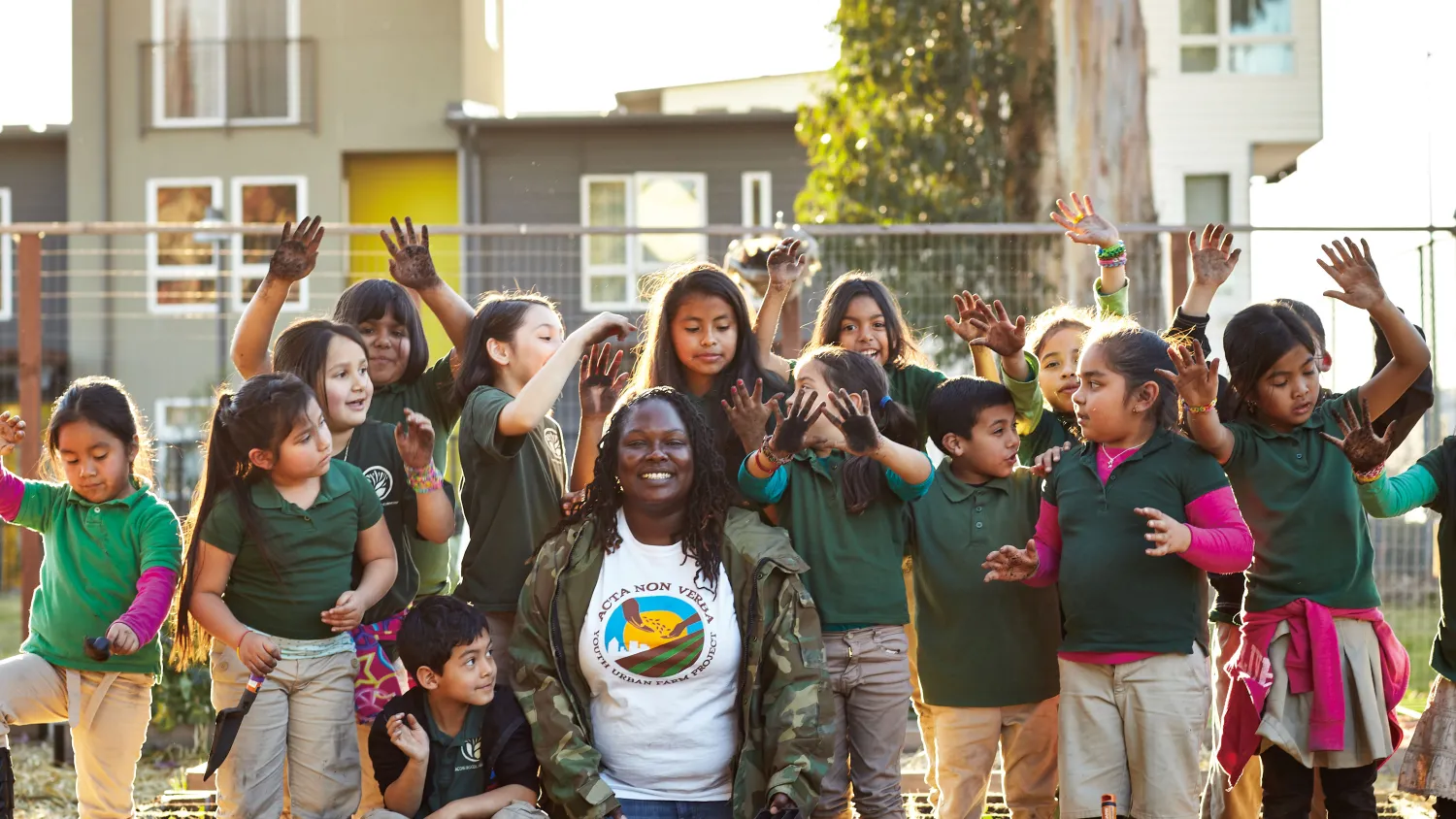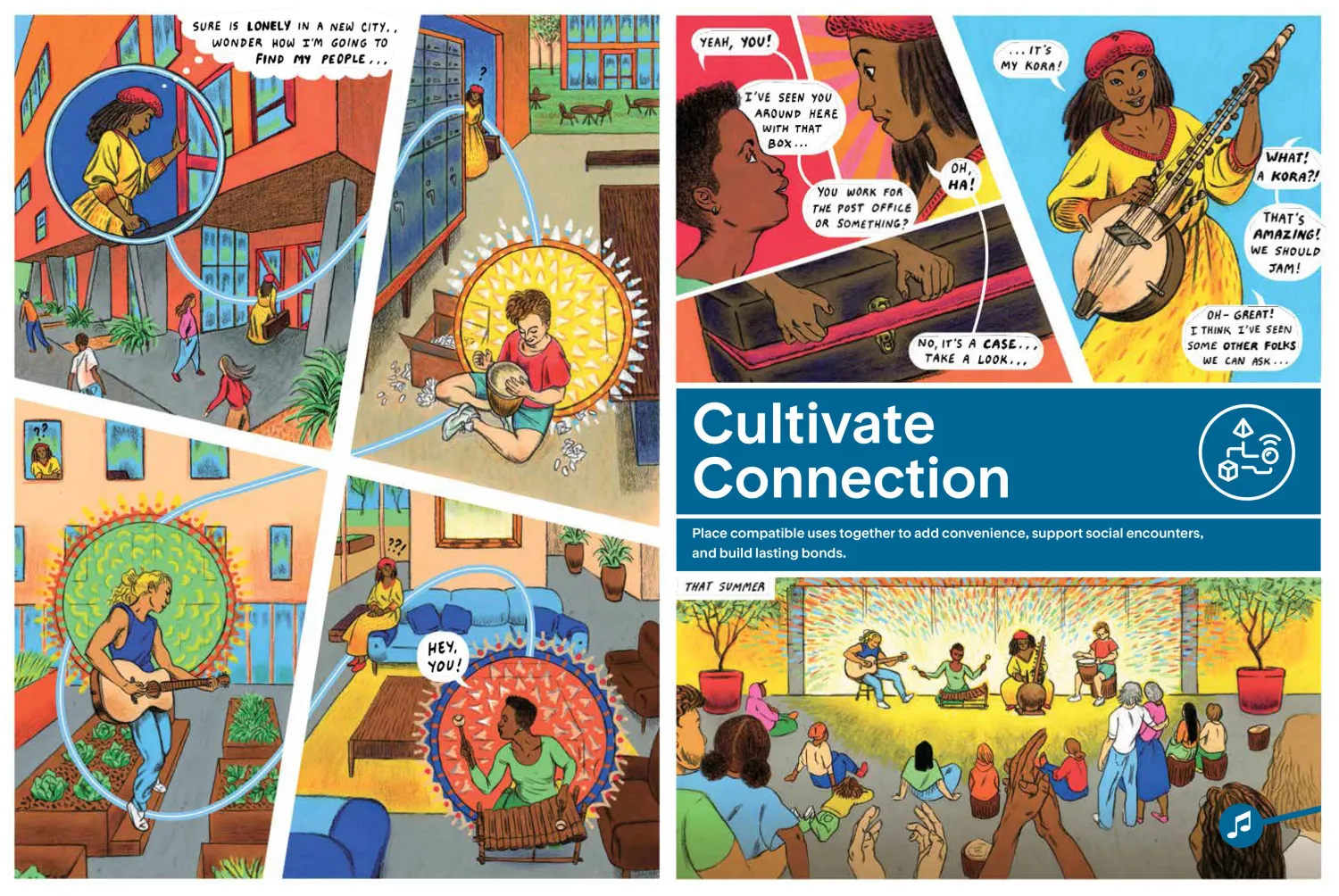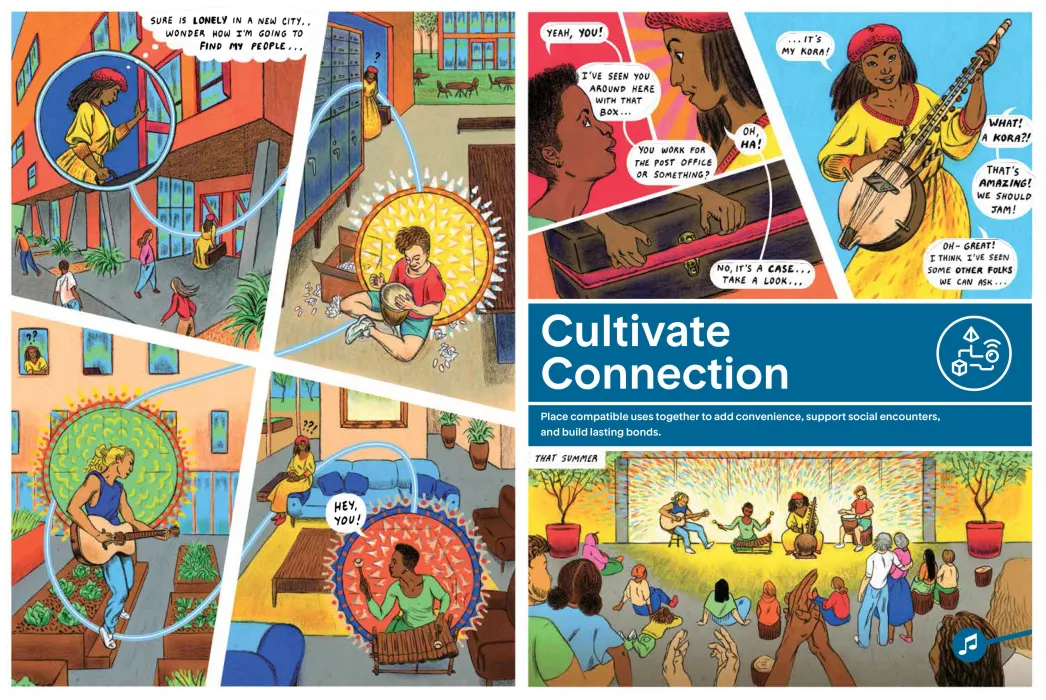
Kelly Carlisle, center, founded Acta Non Verba Farm in East Oakland.
Shortly after the opening of Tassafaronga Village, a renewed 7.5-acre community in East Oakland, the Acta Non Verba: Youth Urban Farm Project put down roots in the adjacent park. Founder Kelly Carlisle had been looking for a place to start a community farm and was inspired by the bright new neighborhood.
After returning to East Oakland, where she’d spent some of her youth, as an adult, she was on the lookout for a place to make a local impact and seized on the opportunity presented by the new housing. Her nonprofit farm project—named after the Latin phrase for “actions, not words”—set out to invest in youth through urban agriculture, creating a secure and creative outdoor space for East Oakland’s youth and families.
“People were nervous to leave their houses back in the day,” Carlisle recalls. “Now parents feel safe dropping off their kids in the garden. We are building a sense of community and ownership here.” The thriving urban farm, which has since expanded to three locations and served more than 4,000 people, offers structured programs for kids and provides a gathering place bustling with community work days, suppers, a farm stand and activities for the entire neighborhood.
Many of the folks who work and learn at the farm live in Tassafaronga Village. When space became available, the farm office moved into Tassafaronga Village’s renovated factory building—extending the farm’s helping hand by offering a quiet working space for community members.
Creating good housing is about much more than providing a place for people to live, sleep and manage their daily tasks. It’s about maximizing human connections in ways that make life richer, easier and more meaningful.
Shared space is a significant part of day-to-day life in a multifamily building. Robust community spaces—common rooms and courtyards; lobbies, lounges and laundries; open green spaces and the paths that connect them—all come into play repeatedly over the course of a day and are the basics on which a real community depends.
Indeed, a 2012 New York Times article described Tassafaronga Village’s “multiplier effect of good design”—a positive change that catalyzes positive change. A letter from one teenage resident illustrates the uplifting effect of the thoughtfully designed housing development: “I love many things about the house I call home. I can see how the buildings were designed to bring us together and to develop safer neighborhoods for this beautiful city. One day I would be honored to do for others what you have done for me…to design houses for the less fortunate.”
Thinking about these semi-public spaces as a cohesive, integrated system—the vital organs that give the building life and vigor—will help you develop them in an intentional manner. This network of shared space, particularly where spaces intersect, sets up opportunities for social connectivity. Ideally, the people in the community will regard the entire building—not just their own apartment—as their home.
Creating connection in new housing
In our book “9 Ways to Make Housing for People,” we outline the core principles and strategies that help communities achieve real quality and value in new housing. For example, we leverage the nature of different types of spaces to cultivate connection within each building.
Community spaces. These are places people go to socialize or be among other residents. To support users of different temperaments, provide social spaces in a range of scales: For example, a library or craft room, a resident lounge with a TV, an event room that opens widely to a courtyard, and a shared kitchen next to an edible garden to build community through the love of food. Link these high-use spaces to create opportunities for chance meetings: Placing the community room near the front door draws residents and visitors into activities; connecting the laundry room with a play area allows parents to get tasks done while kids run and climb.
Crossing spaces. These zones allow for informal encounters—a conversation between folks passing on a stair, a hello at the mailboxes, or someone lending a hand with groceries at the elevator. Building thoughtful points of intersection throughout the building decreases isolation and helps grow friendships.
Picture it: If you pair a stair tower with a lobby and then put that lobby next to a busy courtyard or a walkway, soon you’ll have folks bumping into each other and talking, forming the social bonds we all need to thrive.
Dynamic adjacencies like these put people who would not necessarily use the same space at the same time—seniors and kids, for example—in lively proximity to each other. Strategic pairings of spaces and resources streamline the tasks of daily life and give the community a boost. With care—and input from both residents and management staff—you can balance a building’s needs for social connection and security to create spaces that can be both well-used and well-managed.
Connection spaces. Adjacencies, visual access and slightly removed pairings are powerful as well. Views across the building or courtyard allow people to see each other from a distance, gradually creating familiarity. Peeks into a resident lounge or windows in the fitness room looking out to a yard offer a sense of participation in the life of the building. Pairing quieter seating areas with busy zones allows people to enjoy and be immersed in the bustle of building activity without directly participating.
Courtyards. The quintessential communal space, shared courtyards are a great place to bring diverse uses together in a vibrant way. These flexible spaces can connect resources, expand uses and offer opportunities to engage with nature and other people. They often serve as the heart of the building—allowing events to spill outside, and enlarging the feeling and flow of the indoor spaces. Courtyards provide a place for the whole community to gather and for the building to offer events that engage with the larger neighborhood.
The quality of the common spaces defines the character of the building as a whole. When residents form bonds with each other, it strengthens their ties to the place; extends their idea of home beyond their own front door; and inspires them to care for the building, look out for their neighbors and together build a resilient community
Excerpt adapted from 9 Ways to Make Housing for People by David Baker Architects. Published by ORO Editions, 2022.
David Baker, FAIA; Amanda Loper, AIA; and Daniel Simons, FAIA are Principals at David Baker Architects, a nationally known, locally oriented architecture and urban design firm based in the San Francisco Bay Area and Birmingham, Alabama.
View the full article "Housing Can Help Cultivate Connections. Here’s How To Do It Right" in Next City.

